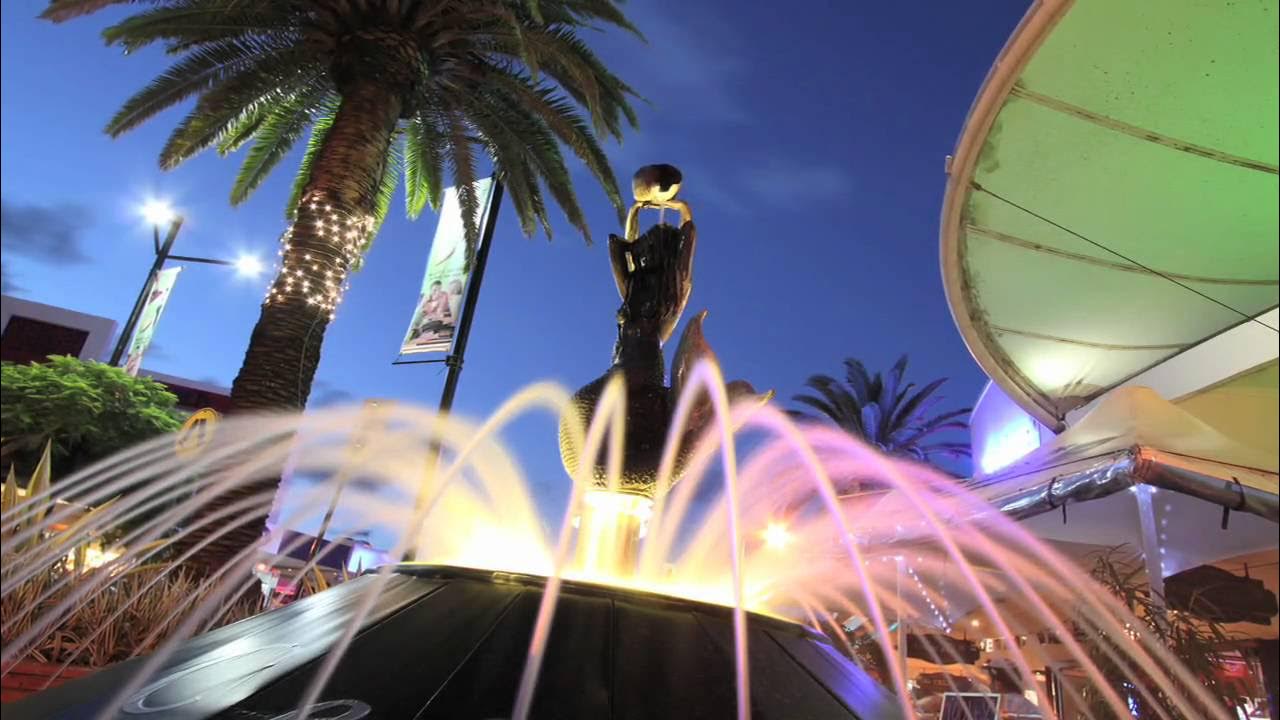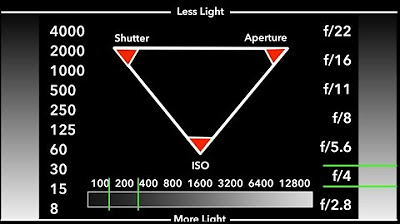basic dasar camera | memahami apa itu segitiga exposure
Summary
TLDRIn this video, Putra offers valuable tips for photographers and videographers, focusing on the fundamental concept of the Exposure Triangle—aperture, shutter speed, and ISO. He explains how each element controls light, depth of field, motion, and image noise, highlighting their interconnections. Through practical examples, he shows how to adjust settings to achieve optimal exposure for different scenarios, such as creating a bokeh effect or capturing fast action. With a casual yet informative tone, this video provides essential guidance to help creators master the balance between these key settings and elevate their work.
Takeaways
- 😀 Aperture controls the amount of light entering the camera. A smaller f-stop (e.g., f/1.4) means a larger aperture, letting in more light and creating a shallow depth of field.
- 😀 A larger f-stop (e.g., f/16) means a smaller aperture, allowing less light and increasing the depth of field, where more of the image remains in focus.
- 😀 Shutter speed determines how long the sensor is exposed to light. Faster speeds freeze motion (e.g., 1/1000s), while slower speeds can create motion blur (e.g., 1/15s).
- 😀 In video, a good rule of thumb is to set the shutter speed to double the frame rate (e.g., 1/50s for 24 fps).
- 😀 ISO controls the sensor's sensitivity to light. Higher ISO allows for better performance in low-light conditions but introduces noise, while lower ISO provides cleaner images.
- 😀 Increasing the aperture (lower f-stop) allows more light, meaning you can lower the ISO or increase the shutter speed to prevent overexposure.
- 😀 The exposure triangle (aperture, shutter speed, ISO) is interconnected. Adjusting one setting affects the others, so balance is key for proper exposure.
- 😀 When shooting for artistic effects like bokeh (blurry background), prioritize aperture (e.g., f/1.4) and adjust shutter speed and ISO accordingly.
- 😀 For fast-moving subjects (e.g., sports), prioritize a fast shutter speed (e.g., 1/1000s) to freeze action and adjust aperture and ISO for exposure.
- 😀 In low-light scenarios, start by lowering the f-stop (e.g., f/1.4) to allow more light in, and increase ISO. If noise is too high, adjust shutter speed to balance exposure.
Q & A
What is the exposure triangle and why is it important for photographers and videographers?
-The exposure triangle consists of three key elements: aperture, shutter speed, and ISO. It is crucial because it controls the amount of light entering the camera's sensor, directly affecting the final image or video. Understanding how these elements interact helps in achieving proper exposure and creative control over the visual output.
What is aperture and how does it affect the exposure and depth of field?
-Aperture is the opening in the camera lens that controls the amount of light entering the sensor. It's measured in f-stops (e.g., f/1.4, f/16). A smaller f-number (e.g., f/1.4) allows more light and creates a shallow depth of field, resulting in a blurred background (bokeh). A higher f-number (e.g., f/16) reduces the amount of light and increases the depth of field, making both the subject and background sharper.
How does shutter speed impact motion blur in photos and videos?
-Shutter speed determines how long the camera’s sensor is exposed to light. A slower shutter speed (e.g., 1/15) lets in more light and creates motion blur, which can be used for artistic effects like capturing moving water or objects. A faster shutter speed (e.g., 1/1000) freezes motion, making fast-moving subjects appear sharp and clear.
What role does ISO play in image quality and exposure?
-ISO controls the sensitivity of the camera’s sensor to light. A lower ISO (e.g., 100) results in cleaner, sharper images with less noise, ideal for bright conditions. A higher ISO (e.g., 1600 or above) makes the sensor more sensitive to light, useful in low-light situations but can introduce noise, reducing image quality.
What happens when you adjust the aperture, shutter speed, or ISO individually?
-Each of the three elements affects exposure differently. Adjusting aperture affects the amount of light and depth of field. Changing shutter speed impacts how much motion blur is visible. Adjusting ISO affects the sensitivity to light and noise in the image. These elements must be balanced to achieve the correct exposure.
Can you provide an example of how aperture, shutter speed, and ISO work together in practice?
-For instance, if you set a wide aperture (f/1.4) for a shallow depth of field, the image might become overexposed. To compensate, you could adjust the shutter speed to a faster setting (e.g., 1/1000) to reduce exposure, or lower the ISO to 100 to maintain the correct exposure without introducing too much noise.
What is the relationship between shutter speed and motion blur in video?
-In video, shutter speed controls how much motion blur appears. A slow shutter speed (e.g., 1/30 or 1/15) will cause motion blur, which can give a cinematic feel. A faster shutter speed (e.g., 1/500) reduces motion blur, resulting in crisp, detailed footage. The typical setting for video is 1/50 or 1/60 for natural motion.
How can you achieve proper exposure if the settings for aperture and shutter speed are already defined?
-If aperture and shutter speed are fixed, ISO is adjusted to fine-tune the exposure. Increasing ISO allows more light sensitivity, brightening the image, while lowering ISO reduces light sensitivity, darkening the image. However, higher ISO can introduce noise, so it's best to keep it as low as possible.
What should you prioritize when shooting a portrait versus a fast-moving subject like in sports?
-For portraits, the priority should be aperture to achieve a shallow depth of field and blur the background (e.g., f/1.4 or f/2.8). For fast-moving subjects, shutter speed should be the priority (e.g., 1/1000 or faster) to freeze the motion and capture crisp details. ISO will help adjust the exposure based on the available light.
What is the effect of increasing ISO in low-light conditions?
-Increasing ISO in low-light conditions makes the camera sensor more sensitive to light, which helps to properly expose the image without needing longer shutter speeds or wider apertures. However, high ISO values (e.g., 1600 and above) can introduce noise, reducing the overall image quality.
Outlines

Cette section est réservée aux utilisateurs payants. Améliorez votre compte pour accéder à cette section.
Améliorer maintenantMindmap

Cette section est réservée aux utilisateurs payants. Améliorez votre compte pour accéder à cette section.
Améliorer maintenantKeywords

Cette section est réservée aux utilisateurs payants. Améliorez votre compte pour accéder à cette section.
Améliorer maintenantHighlights

Cette section est réservée aux utilisateurs payants. Améliorez votre compte pour accéder à cette section.
Améliorer maintenantTranscripts

Cette section est réservée aux utilisateurs payants. Améliorez votre compte pour accéder à cette section.
Améliorer maintenantVoir Plus de Vidéos Connexes

APERTURE, SHUTTER SPEED AND ISO/ THE EXPOSURE TRIANGLE MADE EASY!

Introduction to Exposure

PAHAM SEGITIGA EXPOSURE DI FOTOGRAFI TERBARU 2023, TERLENGKAP!

Canon EOS | Getting Started: Light Meter Tutorial

Understanding Exposure: The Exposure Triangle with Mark Wallace

What is ISO — Camera ISO and the Exposure Triangle Explained [Ep 2]
5.0 / 5 (0 votes)
